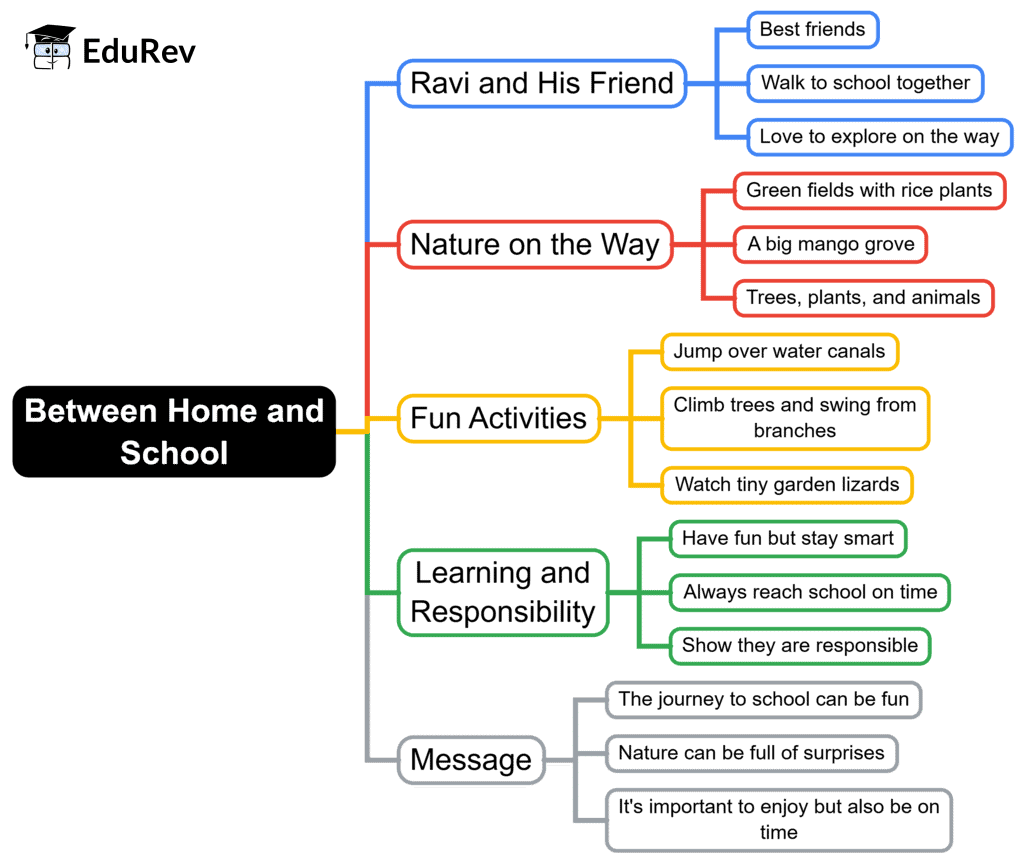Class 2 Exam > Class 2 Notes > English for Class 2 (Mridang) > Mind Map: Between Home and School
Mind Map: Between Home and School | English for Class 2 (Mridang) PDF Download

The document Mind Map: Between Home and School | English for Class 2 (Mridang) is a part of the Class 2 Course English for Class 2 (Mridang).
All you need of Class 2 at this link: Class 2
|
19 videos|250 docs|13 tests
|
FAQs on Mind Map: Between Home and School - English for Class 2 (Mridang)
| 1. What are some ways to create a balance between home and school life for children? |  |
Ans. Creating a balance between home and school life for children can be achieved through setting a consistent routine, encouraging open communication, and involving children in planning their schedules. Parents can ensure that children have time for homework, play, and family activities, while schools can support this balance by providing homework that reinforces learning without overwhelming students.
| 2. How can parents support their child's education at home? |  |
Ans. Parents can support their child's education at home by establishing a designated study area, setting aside regular time for homework, and helping with difficult subjects. Additionally, engaging in educational activities, such as reading together or discussing school projects, can greatly enhance a child's learning experience.
| 3. What role do teachers play in bridging the gap between home and school? |  |
Ans. Teachers play a crucial role in bridging the gap between home and school by maintaining communication with parents, providing updates on student progress, and offering resources that can assist with home learning. They can also encourage parental involvement in school events and activities, fostering a stronger connection between home and school.
| 4. Why is it important for children to have a routine that includes both home and school activities? |  |
Ans. Having a routine that includes both home and school activities is important for children as it helps them develop time management skills, reduces anxiety about schoolwork, and promotes a sense of stability. Routines also encourage children to balance their academic responsibilities with leisure and family time, leading to overall well-being.
| 5. How can schools involve parents in their child’s education? |  |
Ans. Schools can involve parents in their child's education by organizing parent-teacher meetings, workshops, and volunteer opportunities. Providing parents with resources and information about the curriculum and ways to support learning at home can also strengthen the partnership between home and school, ensuring that children receive consistent support.
Related Searches





















